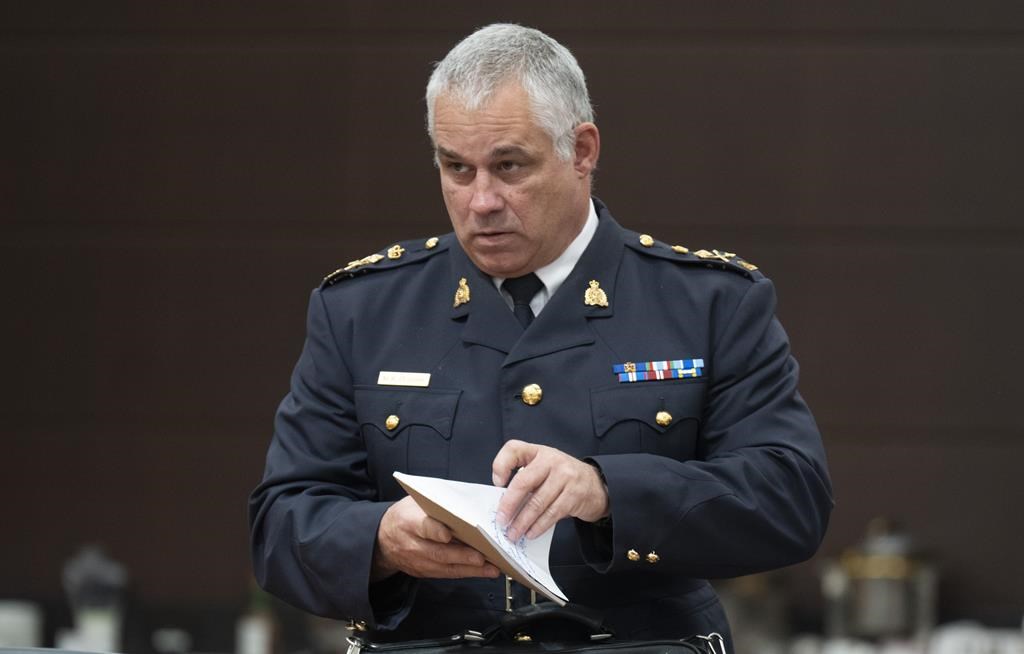Native Canadian Centre of Toronto staff working to promote, protect Indigenous culture
Posted February 23, 2024 10:54 pm.
Last Updated February 24, 2024 8:09 am.
When it comes to protecting and promoting Indigenous art, culture, and traditions, the Native Canadian Centre of Toronto (NCCT) has been working to do so for decades.
The NCCT is located on Spadina Road just north of Bloor Street West. It’s also in a key historical trading corridor, which is still carried through to today with a focus on business and entrepreneurship.
Located on the first floor, the Cedar Basket Gift Shop has been an important fixture for Canadian, Indigenous-owned artists and businesses who have exclusive distribution through the store and online.
“As the Indigenous economy diversifies here and Toronto kind of being an epicentre of that in Canada, we have a very diverse range of items in our shop,” Zechariah James, the NCCT’s social enterprises manager, said.
“Whether it’s something you’re looking for something special for that special someone or you’re looking for something that’s maybe a corporate gift, this is a great place to come and look for something that’s a little bit more unique.”
Among the items for sale are sacred medicines (sage, tobacco, sweetgrass, cedar, etc.), clothing, jewelry, food and drink products (teas, hot sauces, maple syrup and candies, etc.), children’s items, and art pieces.
James said many business owners who have products in the shop graduated from the centre’s Indigenous BEST (Business and Entrepreneurship Skills Training) program. Since it started in 2018, he said more than 250 graduates, and 150 have gone on to start new businesses in Toronto and across Canada.
“(We teach) everything that would be essential to starting up a new business or growing it to the next level: Where to find financing, how to write a business plan, how to create a marketing plan, how to develop a website that’s going to work for you,” James said.
He said the number one issue aspiring entrepreneurs face is marketing. James said after participants graduate, the centre offers unlimited one-on-one mentorship going forward.
“It is overwhelming to get started and there’s a lot of unforeseen challenges that come along with starting any type of new business,” James said.
“Studies have shown us that close to 80 per cent of new entrepreneurs fail within the first five years. That’s all around the world not just in Canada. But we found that 70 per cent of people who start new businesses and get training and mentorship … are still in business after five years.”
Another opportunity for Indigenous business owners to sell items is through the centre’s annual Indigenous artisan marketplace, which attracts vendors from all across Canada. James said it typically occurred over three weekends at the end of November and the beginning of December.
He encouraged people to think about how people can support Indigenous entrepreneurs through everyday, routine purchases.
“Supporting the Indigenous economy and its growth here in Canada … is essential for Indigenous communities to become self-sufficient. They need businesses in those communities that are thriving in order for those businesses to reinvest in the community so that the community is self-sustaining and not reliant on government funding,” James said.
“Whether it’s introducing a new hot sauce line into your cupboards … We’re just making a conscious effort to purchase something that’s handmade by an Indigenous artist. There’ll be a special gift for somebody during the holidays. That’s something that each and every person can do quite easily and if we did, we’d see a significant difference tomorrow if everybody did it today.”
Another major initiative at the NCCT is the community-based family Indigenous languages program.
Katrina Fossum is a registered early childhood educator. She’s learning and helps teach Ojibwe. The program also has teachers for Cree, Mohawk, and Inuit languages. She said the lessons and content are largely driven by participants.
“We kind of ask them what they would like to learn, what their background is, what language they’d like to learn, what they want out of this program, and it’s kind of a process we take together,” Fossum said.
“They want to bring that culture to their family. They want to bring that back because it was lost. For a lot of people … many different communities lost their language lost their culture, so a lot of them they feel a sense of relief.”
She said there’s a strong sense of importance in preserving Indigenous languages well into the future, describing the process of seeing people in a group setting learning “magical.”
“I think it’s important because it ties you to that sense of community. It ties you to that sense of belonging. It brings you back to the culture back to your roots,” Fossum said.
“It is the most wholesome thing I’ve ever experienced to see so many people gathered in one place to just belong and be there and be with everybody.”
She added they routinely get inquiries from non-Indigenous residents in Toronto who are interested in learning Indigenous languages as part of reconciliation.
While classes are offered at the centre, NCCT staff try to meet children and families where they are. There are currently 13 sites with some form of programming across Toronto. Fossum said they’re hoping to expand the number of locations.
Aside from other cultural, senior, and culinary programming at the centre, the NCCT has an extensive art collection. There is no charge to tour the facility, but donations to the charity were encouraged if possible.










